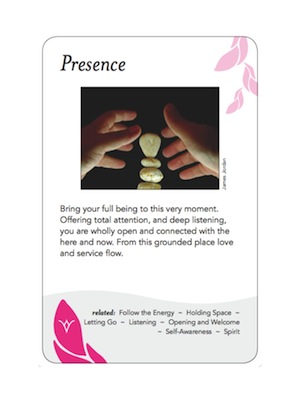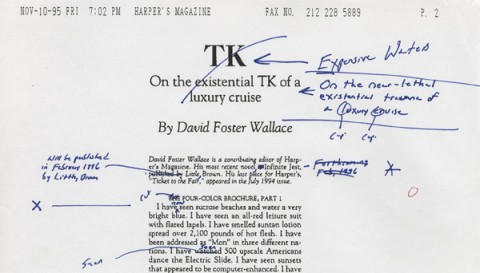This is an interesting post from Dave Pollard at
How to Save the World (his blog is under the
Creative Commons License: some rights reserved). However, I think he is missing a huge piece of the puzzle as to why the effects of violence, addiction, and abuse are so much more visible now - namely, that we are moving into more of a post-modern cultural perspective that honors feelings and experience, whereas many our parents were born into a world that was still largely devoted to rules and roles, which are defined by religion or some other "higher" power.
That is no longer true. Large parts of our society now honor feelings even more than rational thought - with sometimes disastrous results. But it has created an atmosphere where it is not only okay to seek treatment for these childhood traumas, it's actually encouraged, and it's also encouraged to talk about them in public, in magazine interviews, in books/memoirs, and in movies and television.
As far as I can see, this is mostly a good thing.
Later in the article, however, when he talks about collective mindfulness practices, I think he's on to something. Here are some of the practices he has come up with through discussions with Michael and other friends:
- Ask open, interesting questions, and enable the group to explore them without expecting to find answers.
- Bohm/Bohmian Dialogue:
- “Bohm dialogue
is a way of being together in a group. Twenty to forty participants
sit in a circle, for a few hours during regular meetings, or for a few
days in a workshop environment. This is done with no predefined purpose,
no agenda, other than that of inquiring into the movement of thought,
and exploring the process of ‘thinking together’ collectively. This
activity can allow group participants to examine their preconceptions
and prejudices, as well as to explore the more general movement of
thought.” (Thanks to Seb Paquet for this link)
- Participants of such Dialogues (the etymological meaning of the word
is ‘speaking among’ and the ‘dia-’ means ‘across or among’ not ‘two’ as
many think) are urged (a) to suspend judgements and expectations, (b)
not to make any group decisions during or at the conclusion of the
dialogue (the process is emergent), (c) to practice total honesty,
openness and transparency, and (d) to build on rather than challenging
or contradicting what has been said before.
- Rather than being action-oriented (although some users of the
approach have coopted it for making decisions and agreeing upon
actions), this approach seems to be all about increasing understanding
of who we (collectively) are, and appreciation of how our thoughts align
and differ, our worldviews and belief systems overlap and diverge, how
our minds work, imagine and create, and how we “change” our minds.
- Karl Weick’s Simplicity Beyond Complexity Sense-making approach:
- Encourage unstructured conversations to enable shared meaning and understanding to emerge.
- Enable people to move beyond fixed self-identities, to learn about
themselves and see themselves differently and more empowered, more
flexible.
- Appreciate that we often act even before we “make up our minds” and
then rationalize what we did, and facilitate a deep understanding of
what actually underlies our actions and decisions.
- Encourage suspension of decisions and avoidance of confirmation bias
(hearing what we want to hear and disregarding what doesn’t fit with
our worldviews and beliefs).
- Help people understand that complex processes are dynamic and
ongoing and that rigorous analysis, forecasts, predictions, causal
certainty, defined goals, ends and mandates are inherently simplistic
and unrealistic ways to deal with them.
- Dig deeper beyond what seems to make ‘perfect’ sense, with the
knowledge that the truth is always more profound and complex than we can
every fully understand.
- Iterate and try lots of “safe-fail” explorations and experiments to avoid being locked in to one way of thinking or one course of action.
- Make music, art, theatre, quilts, or barns together, improvisationally and cohesively.
- Nature walks, watching the sunrise/sunset/storm/stars, and similar
unstructured shared observation and exploration experiences. By this I
mean peaceful, silent, reflective activities, not White Mile character-building or cult indoctrination
activities. I also don’t mean watching movies or theatre together —
such activities, like reading (even while in each other’s arms), take
our attention away from the others we attend with, instead of engaging
us together as part of a larger whole.
- Playing together, either collaboratively or, if not, then without
intense competition or keeping score. Role-playing games, cooperative
board games, ultimate frisbee — it doesn’t really matter what you play.
- Eating together, without outside distractions.
Be sure to read the whole article - these suggestions make only minimal sense out of context.
Dave Pollard - Feb. 16, 2012
The other day I had lunch with Michael Nenonen, a Vancouver social worker and freelance journalist (and a new friend). Michael has written a lot about the malaise of our modern culture and the damage it has done to us individually and collectively. One of the things we discussed was why, when there is plenty of evidence that physical and psychological abuse (in families, in the workplace, and in institutions) was at least as common in previous generations of our modern industrial civilization as it is today, the evidence of the trauma that abuse causes seems so much more visible today. Were previous generations just more stoic than ours in accepting this? Were they somehow more resilient, less affected by it than we are?
Michael’s view is that, in the first place, the damage done in previous generations was just as great — the extent of alcoholism, incarceration of the “mentally ill”, and the consequent abuse these previous generations have in turn inflicted on ours, all attest to that. The fact that it’s more visible today, he thinks, is due to the evolution of our society in recent generations from a “producer” society to a “consumer” society. My parents’ generation was expected to work hard and produce, and were assessed by their peers (and probably self-assessed as well) by how successful and effective they were at producing. There was considerably less tolerance for or consideration of behaviours of conspicuous consumption, or in fact any “weak”, unproductive, unexemplary or disobedient behaviour. One was expected to behave oneself, and, when one felt bad, buck it up, for the good of all.
By contrast, we are now judged largely by what we consume, and it is relatively unimportant how we came by the means to consume it (hard work, theft or inheritance). As a result, a much broader range of visible behaviour is tolerated, and responsibility for what we do and how we act has been substantially left to our discretion (or lack thereof). The “insane asylums” and hospitals for the poor have mostly been emptied and closed, their previous residents for the most part thrown into the streets. From schools to workplaces to religious observances, our culture has been socially deregulated, and the result is that our personal and collective trauma is on display, untreated (for better or worse), unconcealed and made our own personal responsibility. It is even, when sufficiently entertaining, celebrated, in an endless orgy of schadenfreude on Reality TV.
We are left to heal ourselves, and our homes and communities have now become the prisons and hospitals in which we seek to do it. Mental illness has become a huge and profitable industry for Big Pharma to exploit; giant pill-pushing corporations now relentlessly press us to “ask your doctor if X is right for you” (and challenge him or her if the answer is “no”).
Read more.














